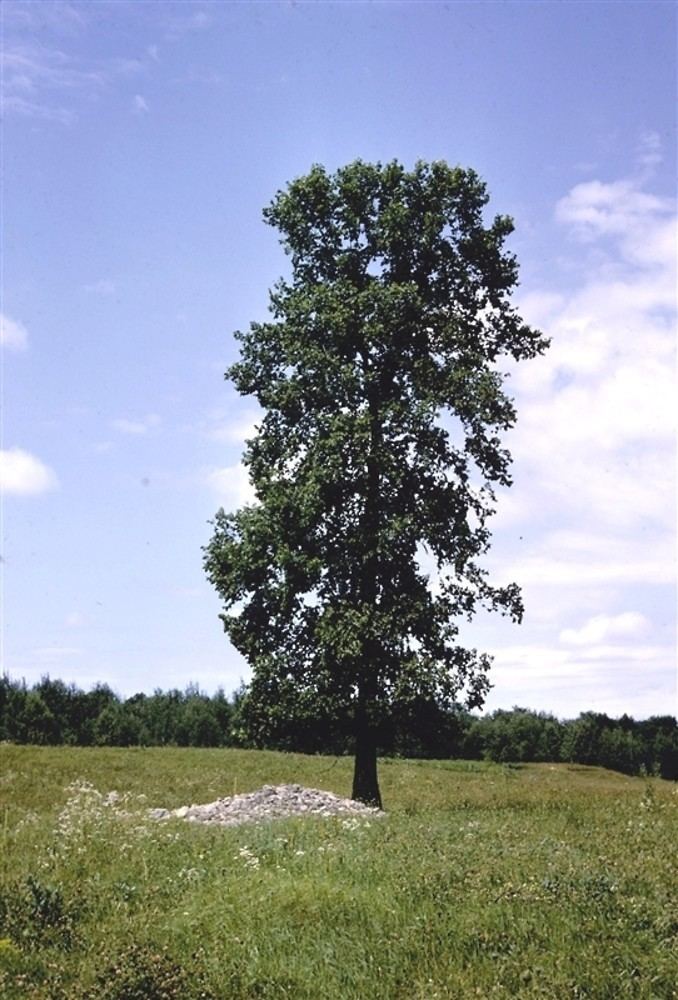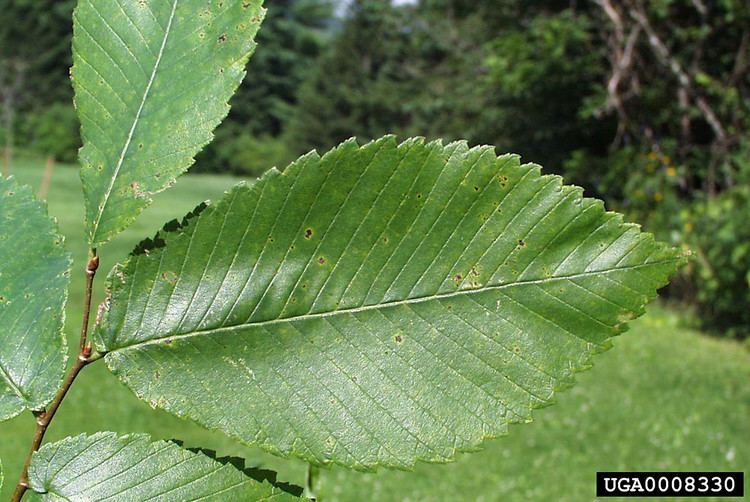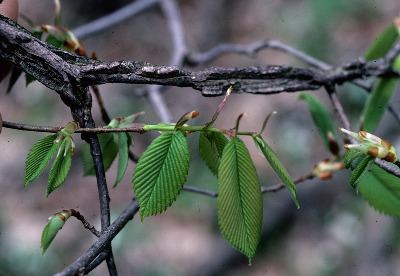Scientific name Ulmus thomasii Rank Species | Genus Ulmus Higher classification Elm | |
 | ||
Similar Elm, Ulmus alata, Ulmus serotina, Ulmus crassifolia, Ulmus americana | ||
Ulmus thomasii orme li ge mov
Ulmus thomasii, the rock elm or cork elm, is a deciduous tree native primarily to the Midwestern United States. The tree ranges from southern Ontario and Quebec, south to Tennessee, west to northeastern Kansas, and north to Minnesota.
Contents
- Ulmus thomasii orme li ge mov
- Etymology
- Description
- Ecology
- Pests and diseases
- Cultivation
- Notable trees
- Uses
- Accessions
- References

Etymology

The tree was named in 1902 for David Thomas, an American civil engineer who had first named and described the tree in 1831 as Ulmus racemosa.
Description

Ulmus thomasii grows as a tree from 15–30 m (50–100 ft) tall, and may live for up to 300 years. Where forest-grown, the crown is cylindrical and upright with short branches, and is narrower than most other elms. Rock elm is also unusual among North American elms in that it is often monopodial. The bark is grey-brown and deeply furrowed into scaly, flattened ridges. Many older branches have 3–4 irregular thick corky wings. It is for this reason the rock elm is sometimes called the cork elm.

The leaves are 5–10 cm (2–4 in) long and 2–5 cm (3⁄4–2 in) wide, oval to obovate with a round, symmetrical base and acuminate apex. The leaf surface is shiny dark green, turning bright yellow in autumn; the underside is pubescent. The perfect apetalous, wind pollinated flowers are red-green and appear in racemes up to 40 mm (2 in) long two weeks before the leaves from March to May, depending on the tree's location. The fruit is a broad ovate samara 13–25 mm (1⁄2–31⁄32 in) long covered with fine hair, notched at the tip, and maturing during May or June to form drooping clusters at the leaf bases.
Although U. thomasii is protandrous, levels of self-pollination remain high.
Ecology

Ulmus thomasii is moderately shade-tolerant. Its preferred habitat is moist but well-drained sandy loam, loam, or silt loam soil, mixed with other hardwoods. However, it also grows on dry uplands, especially on rocky ridges and limestone bluffs.
Pests and diseases
Like most North American elms, U. thomasii is very susceptible to Dutch elm disease.
Cultivation
There are no known cultivars of Ulmus thomasii, nor is it known to be in commerce. The species is occasionally grown beyond its native range as a specimen tree in botanical gardens and arboreta, for example in northwestern Europe, but not commonly cultivated in northern Europe, being unsuited to the region's more temperate, maritime climate.
Ulmus thomasii was crossed experimentally with Japanese elm (Ulmus davidiana var. japonica) at the Arnold Arboretum in Massachusetts, but no clones were released to commerce. Seedlings arising from crossings with Siberian elm (U. pumila) at the Lake States Forestry Experimental Station in the 1950s all perished, a classic case of hybrid lethality.
Notable trees
The USA National Champion, measuring 100 ft (30 m) high in 1989, grows in Cass County, Michigan.
Uses
The wood of the rock elm is the hardest and heaviest of all elms, and where forest-grown remains comparatively free of knots and other defects. It is also very strong and takes a high polish, and consequently was once in great demand in America and Europe for a wide range of uses, notably shipbuilding, furniture, agricultural tools, and musical instruments.
Much of the timber's strength is derived from the tight grain arising from the tree's very slow rate of growth, the trunk typically increasing in diameter by up to 2 mm (3⁄32 in) a year. Over 250 annual growth rings were once counted in a log 24 cm (9 1⁄2 in) square being sawn for gunwales in an English boatyard, while a tree once grown at Kew Gardens, London, attained a height of only 12 m (39 ft) in 50 years.
